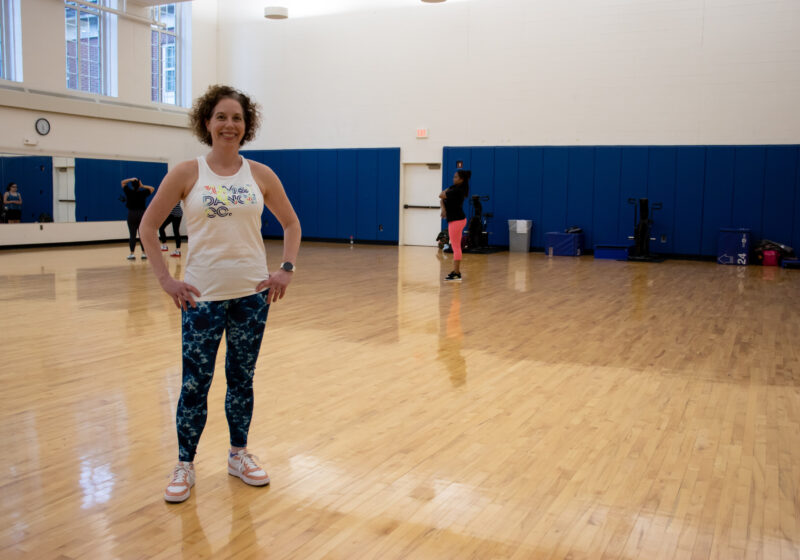 Junior Avery Palardy intends to do something most students her age have not: Spend four weeks in Antarctica.
Junior Avery Palardy intends to do something most students her age have not: Spend four weeks in Antarctica.
“We’re looking at past climate change and analyzing gas composition of ice cores,” Palardy said. “We’re looking at a time period that’s between 12,000 to 14,000 years old.”
Palardy will make the expedition to Taylor Glacier with a team consisting of earth & environmental sciences professor Vasilii Petrenko, two graduate students, and four other faculty members from others universities. On this trip, Palardy will experience the everyday workings of an ice core research camp, including operating the drills and collecting ice core samples.
There was just one problem with Palardy’s research trip scheduled to last Oct. 31 through Dec. 6: It was entirely funded by the National Science Foundation (NSF) and consequently suspended due to the federal government shutdown.
“Basically everything about Antarctica is federally funded,” Palardy said. “All supplies and all helicopters in and out are funded by the government.”
On Oct. 8, nearly all American research teams operating in Antarctica were forced to abandon their work and return home due to the shutdown. According to Palardy, a research team from New Zealand is currently maintaining the American base that would supply her research.
Even with Congress currently passing a budget deal and forseeably ending the shutdown, there is no guarantee that Palardy will be able to go on the trip this year. Recent budget cuts, increases in fuel costs, and the continually melting geography have forced research teams to curb both the frequency and scope of such research expeditions. Even with the shutdown ending, the season for collecting samples has dramatically shortened, and research teams may not yield the same results. There is over 30 years of data and research that will suffer.
Beyond spoiling a rare research opportunity, the shutdown has altered Palardy’s plans for the future.
“I rearranged my entire schedule,” Palardy said. “I pushed all my harder classes to senior year and decided to underload this semester. Now [Petrenko] is saying we can go senior year, but I just don’t think I can.”
In the 16 days since Oct. 1, over 800,000 federal employees, ranging from National Park rangers to NASA analysts, were furloughed.
But the shutdown has been felt at UR even outside of the classroom. UR’s homecoming football game against the Merchant Marine Academy was rescheduled against Alfred State College as the nation’s five military academies were forced to limit their athletic programs.
The shutdown was the result of House Democrats and Republicans unable to agree on a federal budget for the new fiscal year that began Oct. 1. A Republican-dominated House held hostage President Barack Obama’s Affordable Care Act (ACA) and presented in every budget plan a means to defund the ACA. The Democrat-controlled Senate, however, refused to pass any budget plan that threatens the ACA. Meanwhile, the United States was dangerously close to reaching its debt ceiling, and Congress had to act fast to either raise the debt limit or risk defaulting on it loans domestically and abroad.
But as Republicans and Democrats had a staring contest over their most important responsibility, the country suffered. Not only was a significant portion of the federal workforce sent home, online government databases went offline and federal grants for the sciences and arts frozen.
On Oct. 1, University President Joel Seligman sent an e-mail to students on the immediate and long-term implications of the shutdown for UR. The message said that the school has sufficient resources to “address its immediate obligations in the absence of payments from the federal government.”
The message also said that research grant activity would continue for the immediate term. But nowhere in the e-mail was a specific timeline of exactly how long the University would remain financially secure.
Fiscal issues were on the minds of many students who rely on federal funds for their income. Junior Mark Lawlor, who works part-time as a research assistant at the emergency room in Strong Memorial Hospital, receives compensation through a federal work-study program.
“As far as I know, the hospital pays some percentage of my salary while the government pays another,” Lawlor said, adding that he was unsure of whether the government would continue to support his work-study.
Certain financial aid packages also remained incomplete as a result of the shutdown.
“I’m missing the tax return transcript which is basically the tax return with an [Internal Revenue Service] stamp,” a student who wished to remain anonymous said. “Since the IRS can’t stamp it, the package remains incomplete, and it can’t disperse money.”
The shutdown did not impact every student’s financial standing with the University, but other obstacles did present themselves.
Students in certain statistics and science classes were unable to complete certain assignments because government sites like pubmed.gov were ostensibly offline.
“If I’m not able to access these government websites, I’m not able to write my papers and complete my assignments that are due throughout the next few months,” sophomore Matthew Lerner, a Public Health 116 student, said.
Thankfully, professors will no longer have to worry about adjusting their curriculums.
According to Palardy, it is too easy to overlook just how far-reaching such a shutdown can be for all aspects of life at UR.
“I feel bad for the scientists,” Palardy said. “It’s their work out there. That’s their lives.”
Gilboard is a member of the class of 2015.
